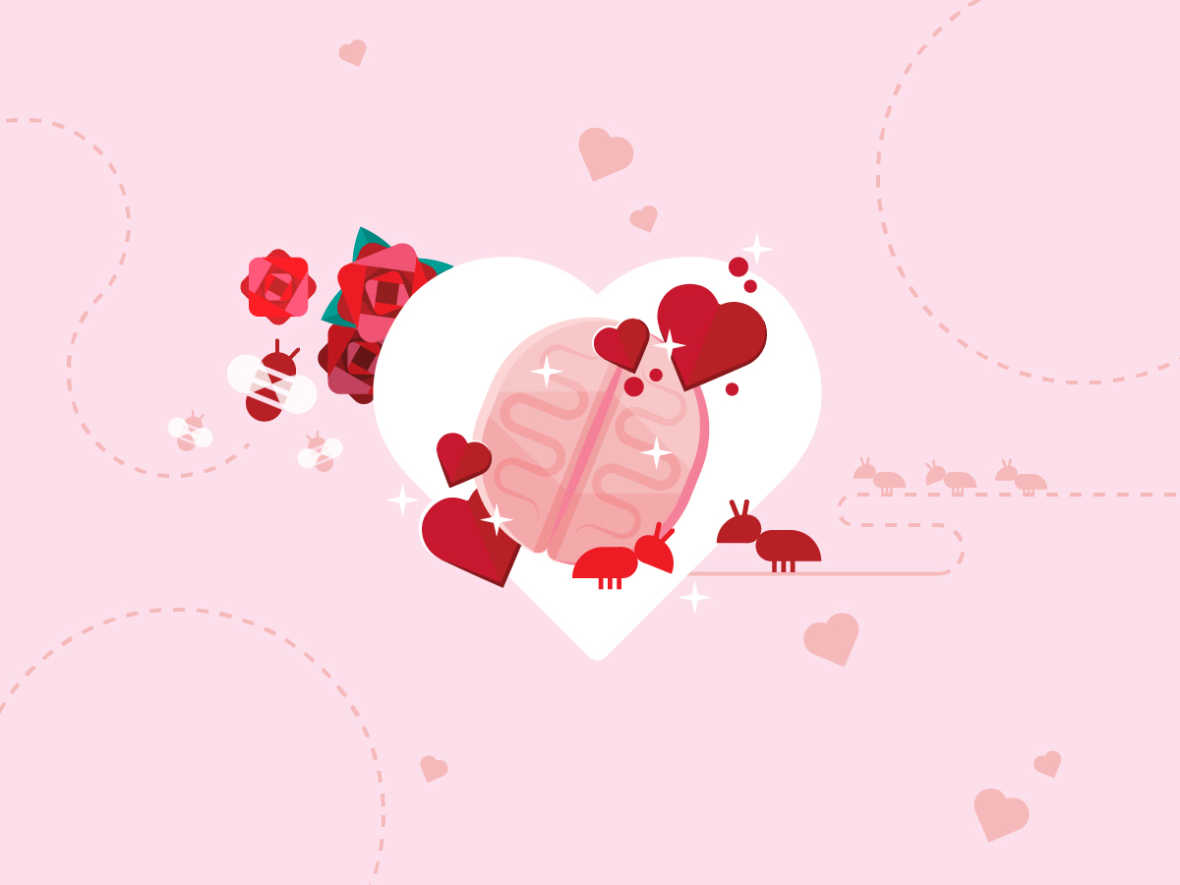
What Happens to a Brain in Love?
Well, a lot of things, but scientists surveying the research around love have concluded that, “without loving relationships, humans fail to flourish, even if all of their other basic needs are met” (Carter and Porges 2012). From humans to microscopic organisms, social connections are not just a luxury but a means of survival: bacteria gravitate towards other members of their species, ants and bees have complex social systems, and wolves and voles select and attach to other adults in ways that look a lot like human love.
This isn’t to say that human love is exclusively a function of biology—humans create narratives around romantic love that reinforce its importance, for instance—but biology is a big part of the equation. Many of us might be familiar with testosterone and estrogen as playing a major role in attraction and sexual desire, and the role that the hormone oxytocin plays in love continues to surprise researchers. Indeed, physical touch elicits oxytocin, helping to bond people both romantically and in families. Interestingly, oxytocin helps babies attach not just to mothers but to other adults because “evidence suggests that simply the presence of an infant releases oxytocin in adults. The baby virtually ‘forces’ us to love it” (Carter and Porges). Other biological aspects can also lead us to feel almost compelled to love.
In a first-of-its-kind study begun in 1996, psychologist Dr. Helen E. Fisher asked college students who self-identified as madly in love to undergo a brain scan via fMRI. They were shown a rotating set of images, some neutral, and some of the beloved. The results of the scan shocked Fisher: “Many brain parts became active in our love-struck subjects when they focused on their beloved. However, two regions appear to be central to the experience of being in love. Perhaps our most important finding concerned activity in the caudate nucleus…. I was astonished.”
The caudate nucleus is an area deep in the brain that evolved long before mammals did, sometimes referred to as the reptilian brain. And, since ‘reptilian’ behavior isn’t typically associated with amorous human activity, Fisher had to reconfigure her ideas about this brain area. The caudate nucleus is often associated with movement, but Fisher came to the conclusion that “motivation” made more sense in this context.
Less surprising than the ‘reptilian’ brain activation was that of the ventral tegmental area, or VTA. The VTA is “a central part of the reward circuitry of the brain” that sends out the neurotransmitter dopamine to focus attention and energy on reward-production, producing “feelings of elation — even mania — the core feelings of romantic love" (Fisher). For the same reasons that oxytocin and dopamine might foster appropriate and necessary bonds of love among families and social groups, too much of a good thing is also associated with these hormones: we can feel crazed by and addicted to love, which goes a long way towards explaining certain episodes in the past that some of us would rather forget.
References: http://content.time.com/time/magazine/article/0,9171,993160-1,00.html
http://sitn.hms.harvard.edu/flash/2017/love-actually-science-behind-lust-attraction-companionship/
